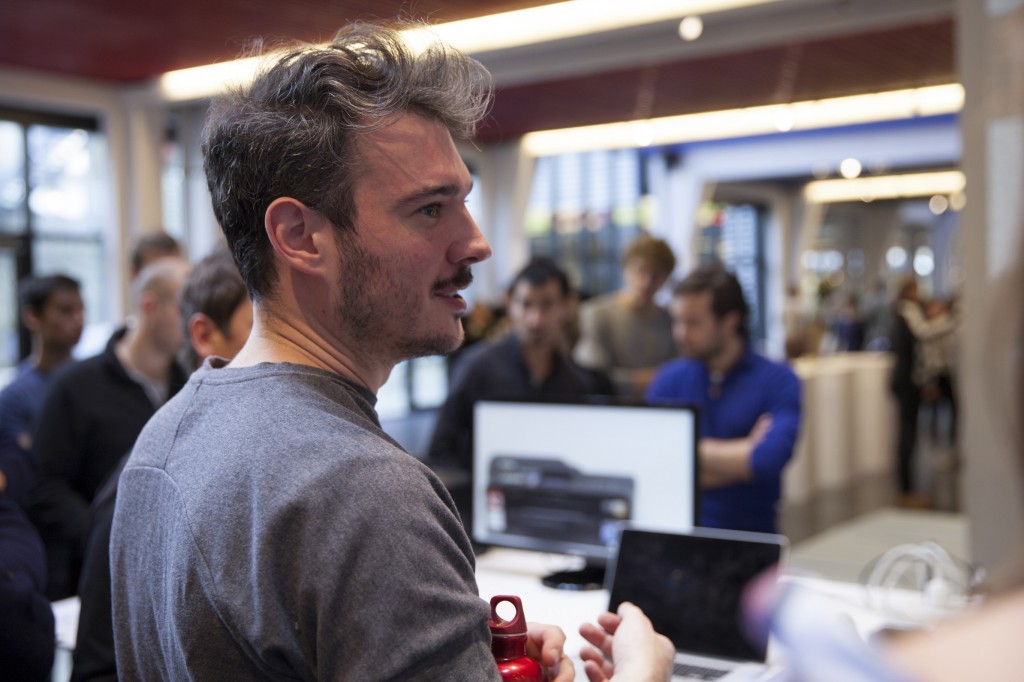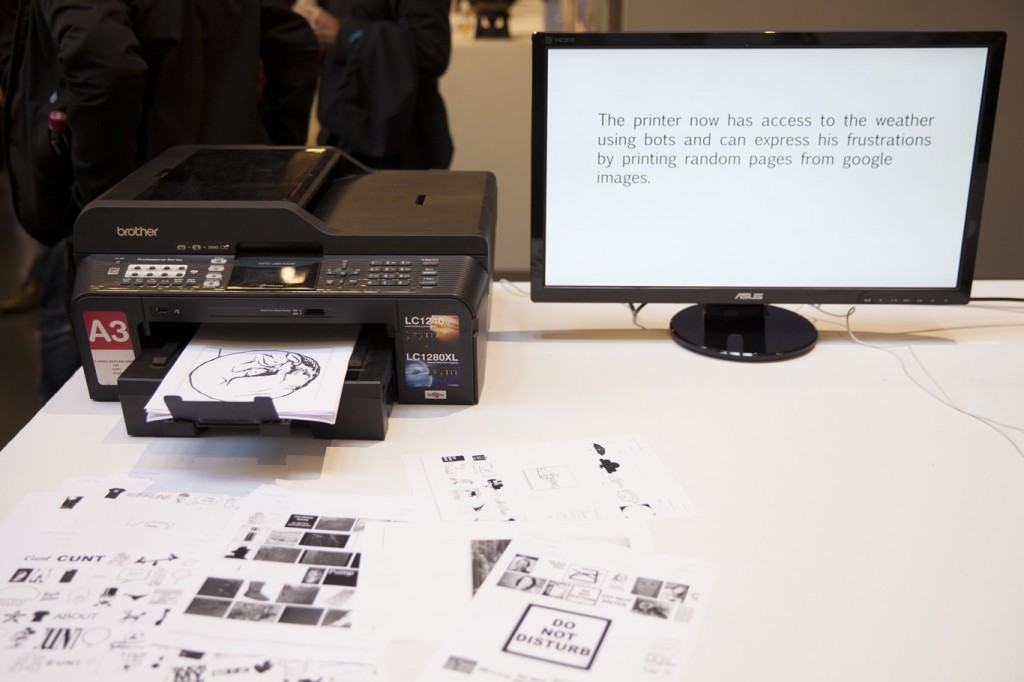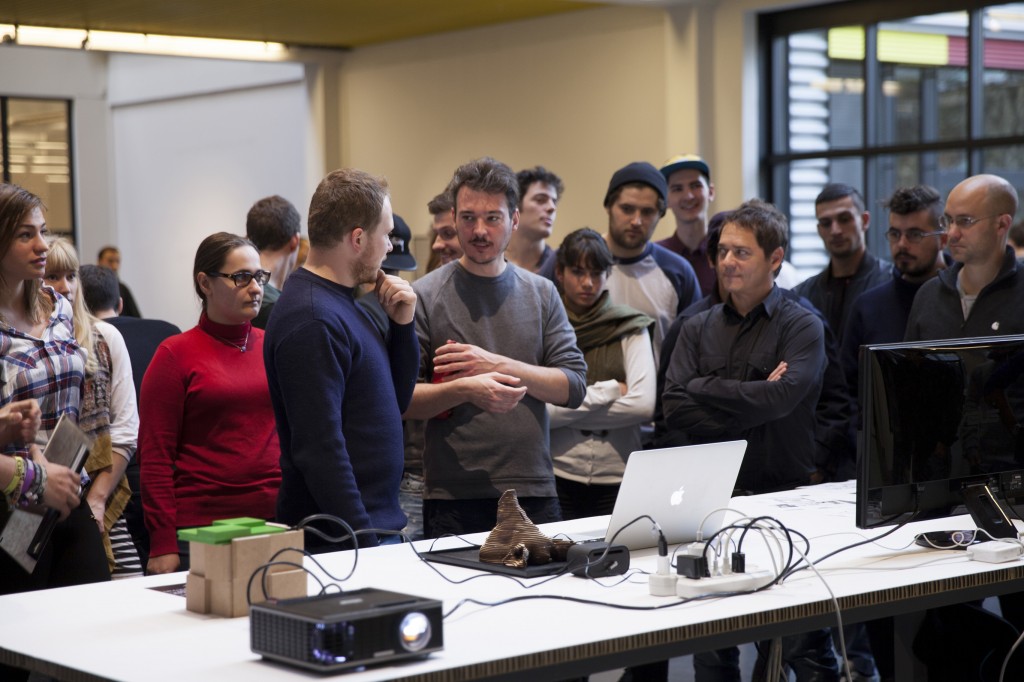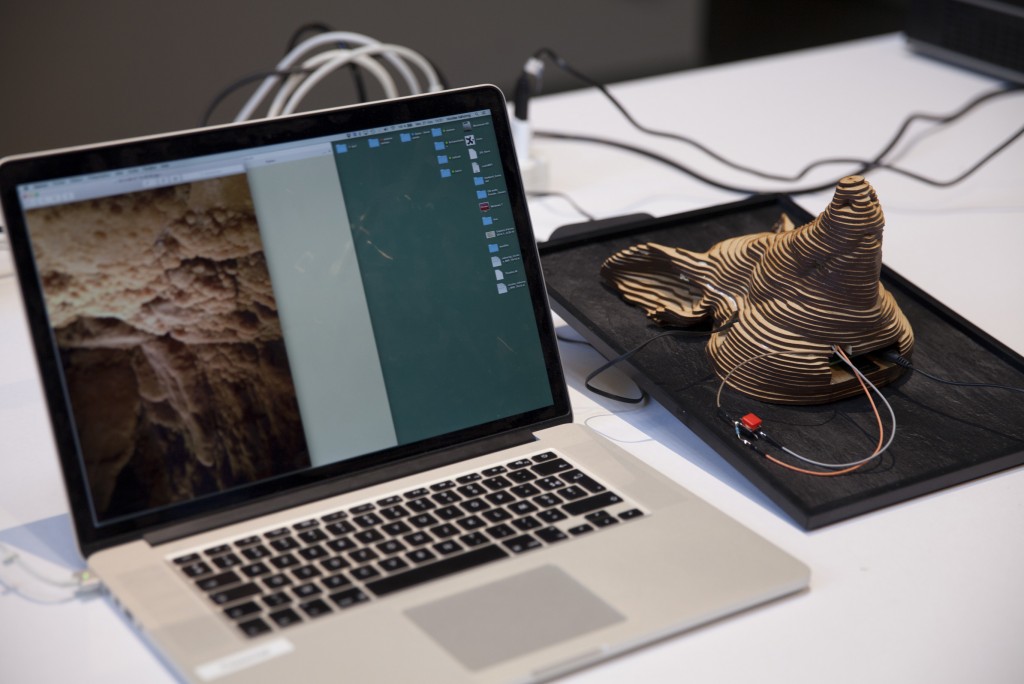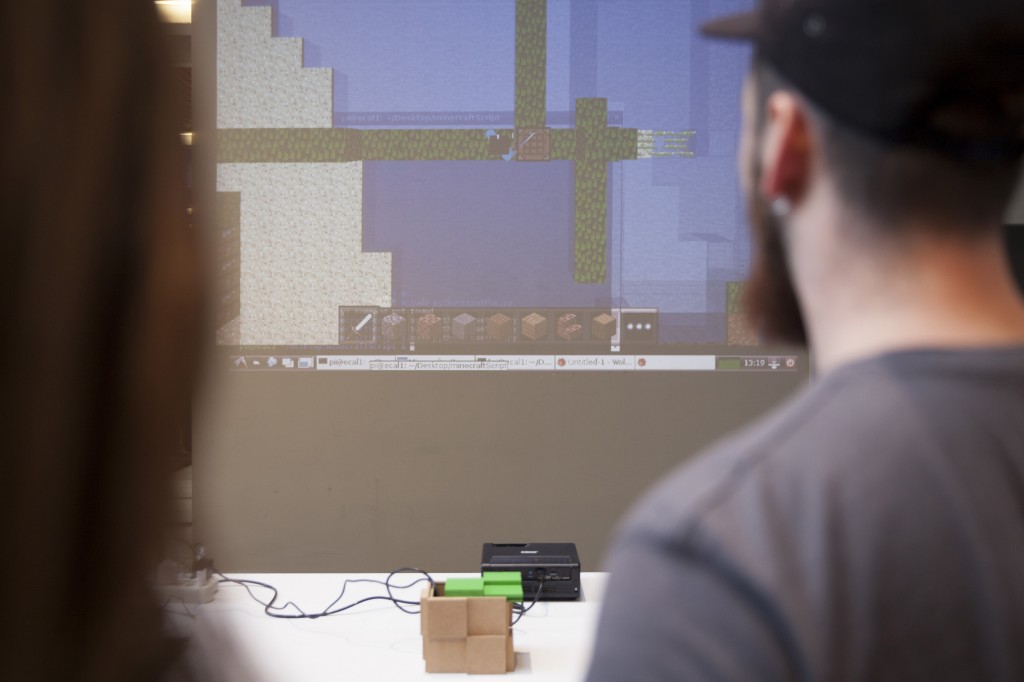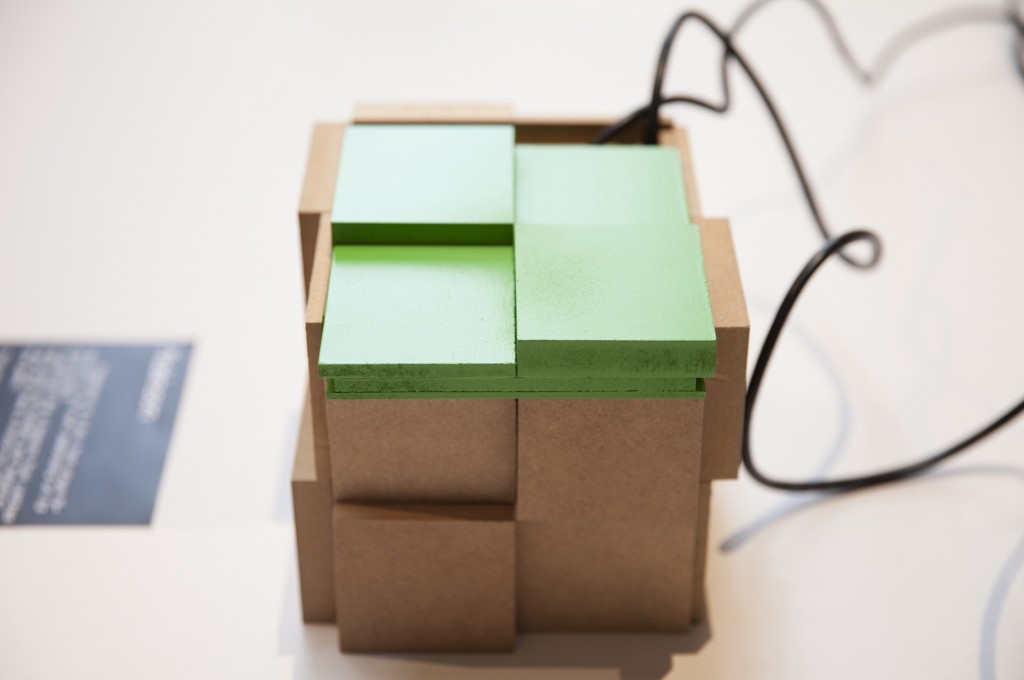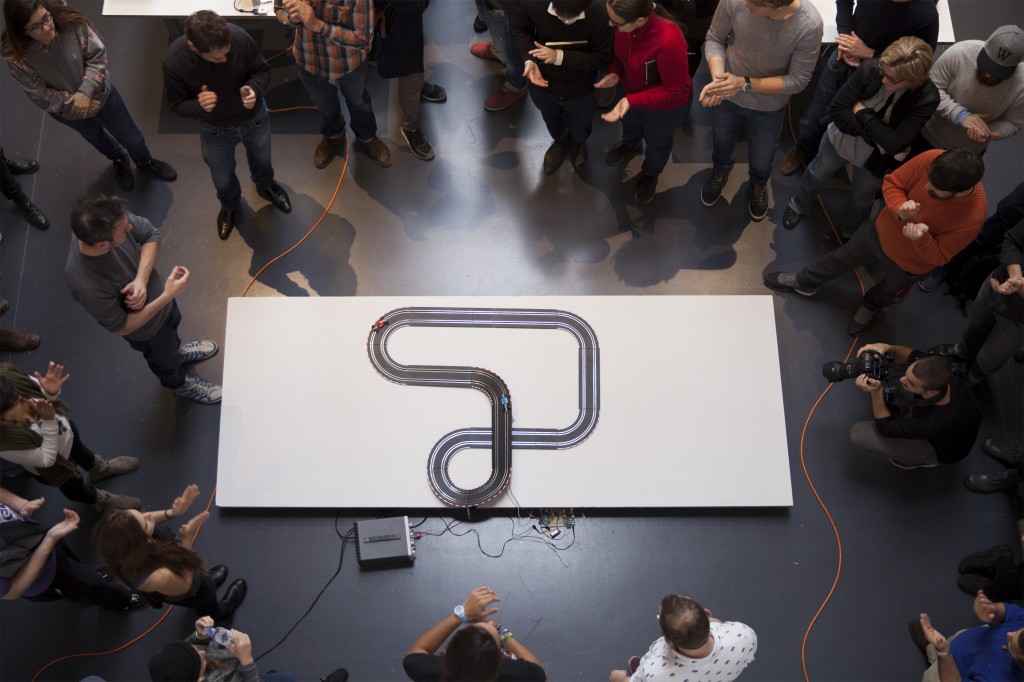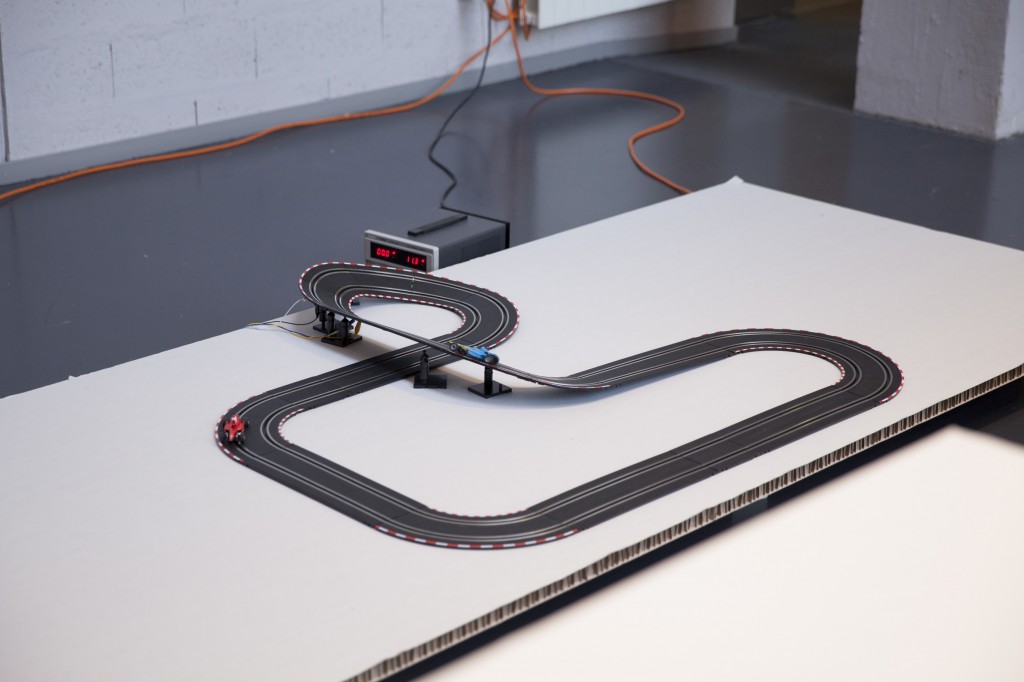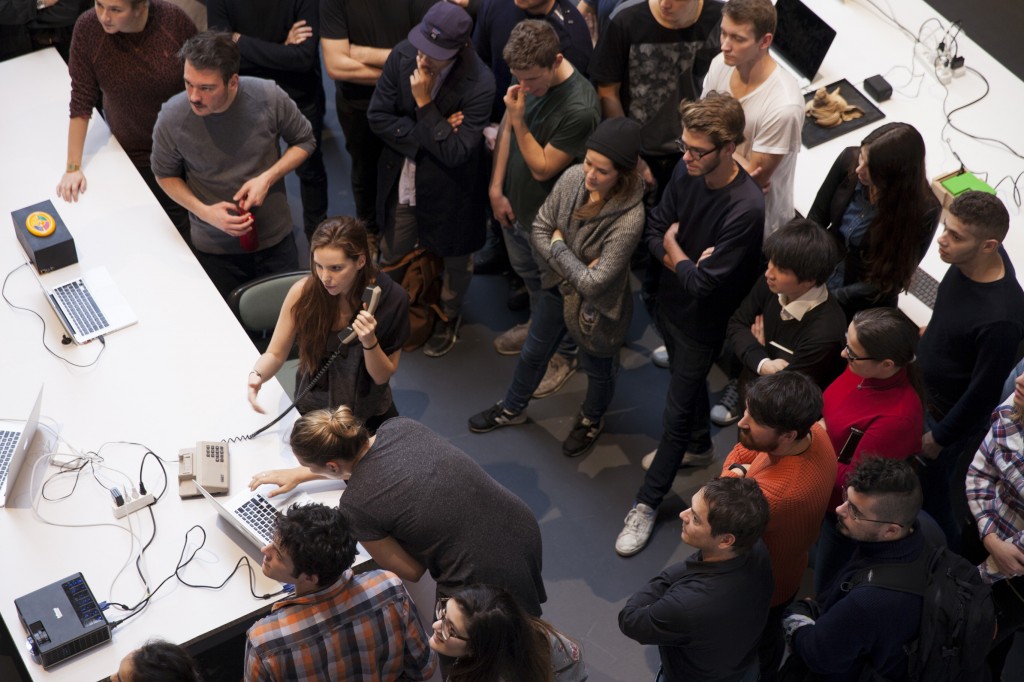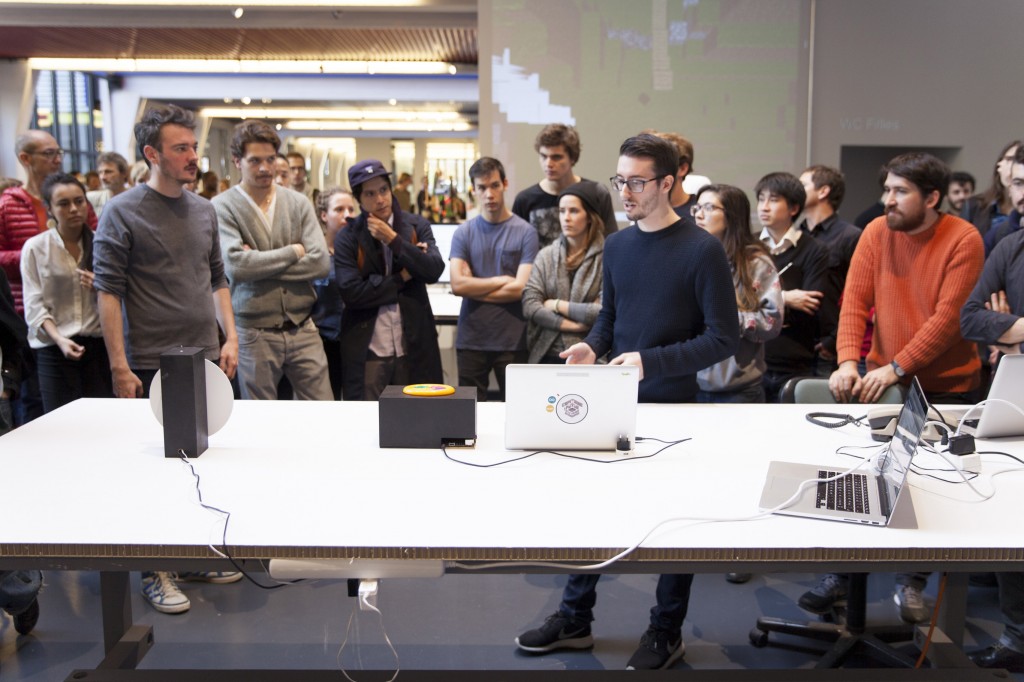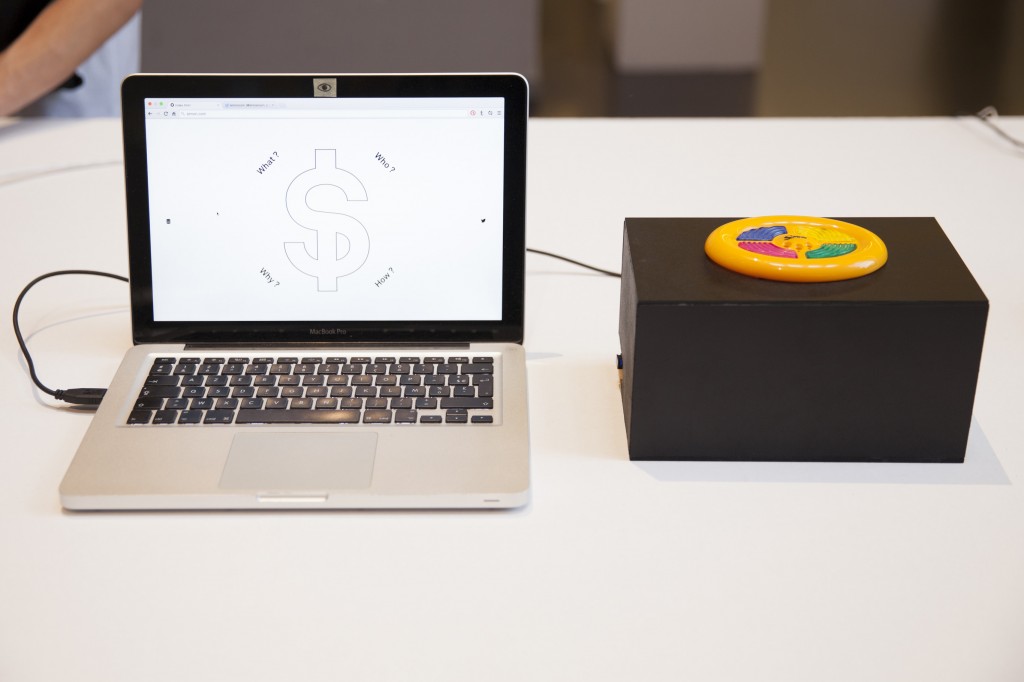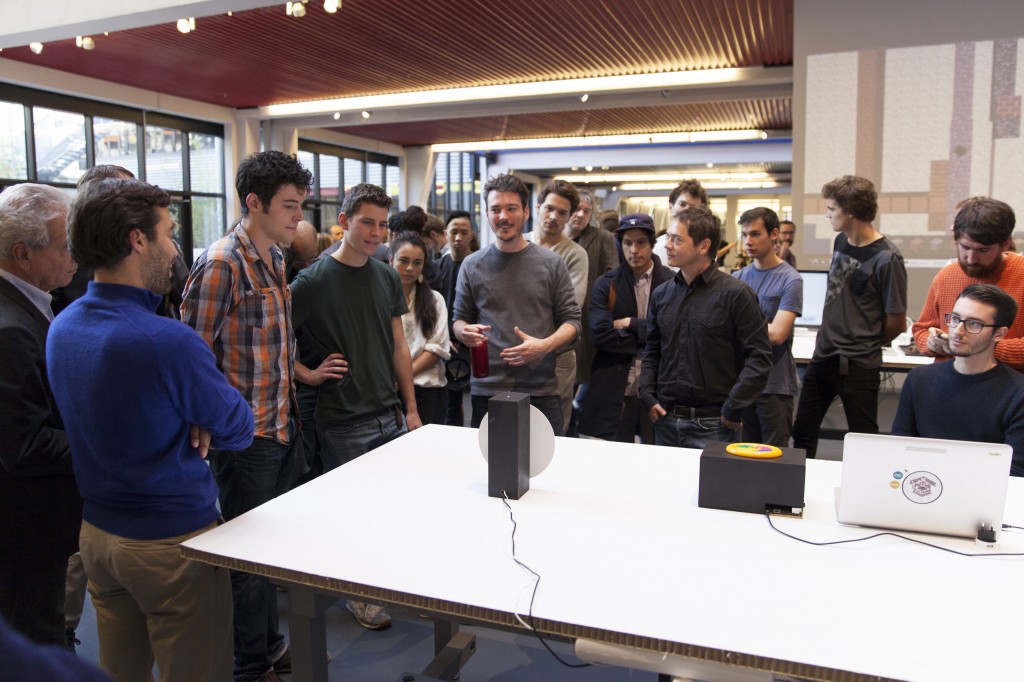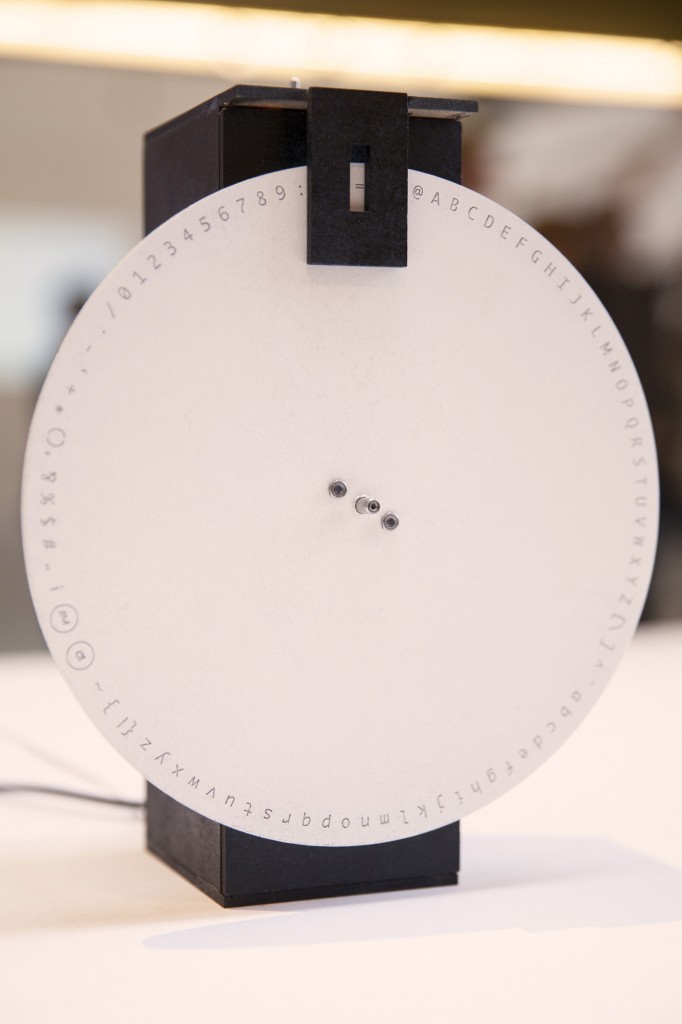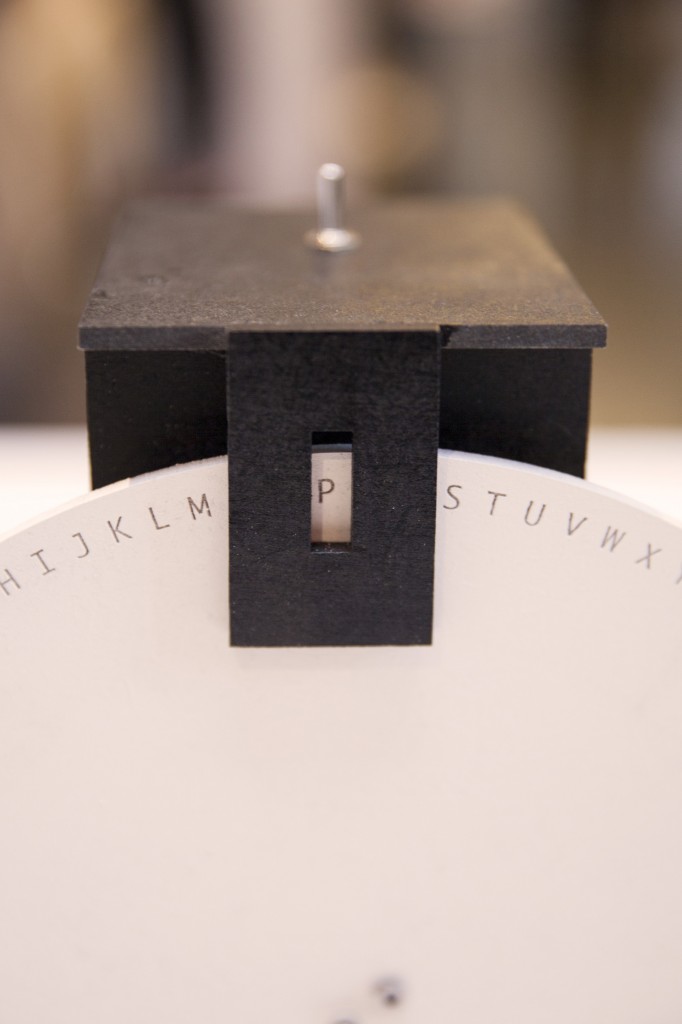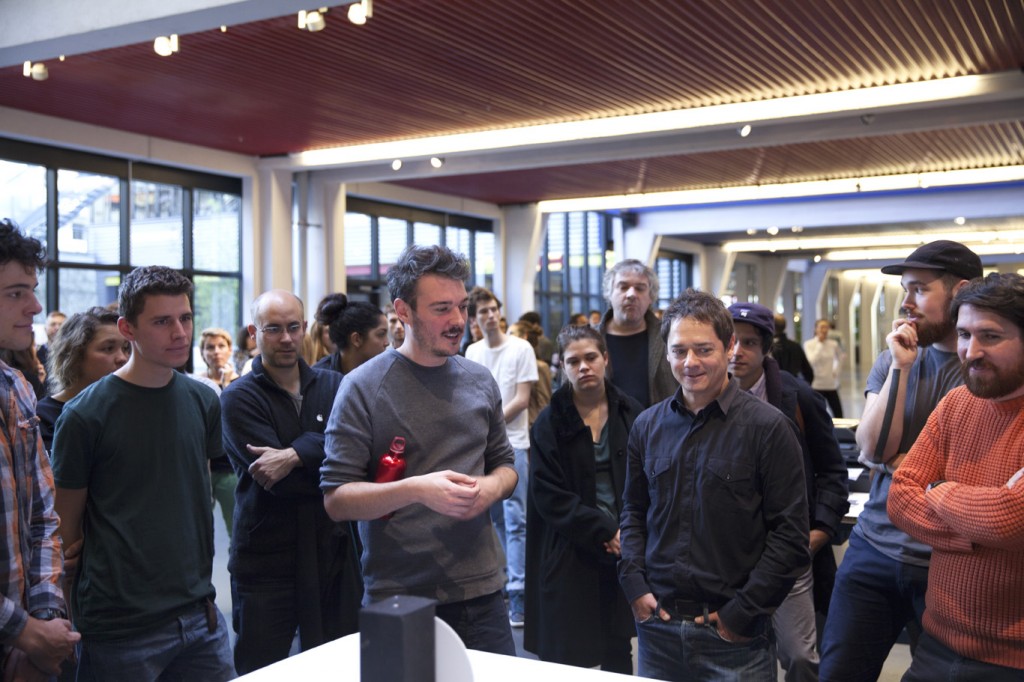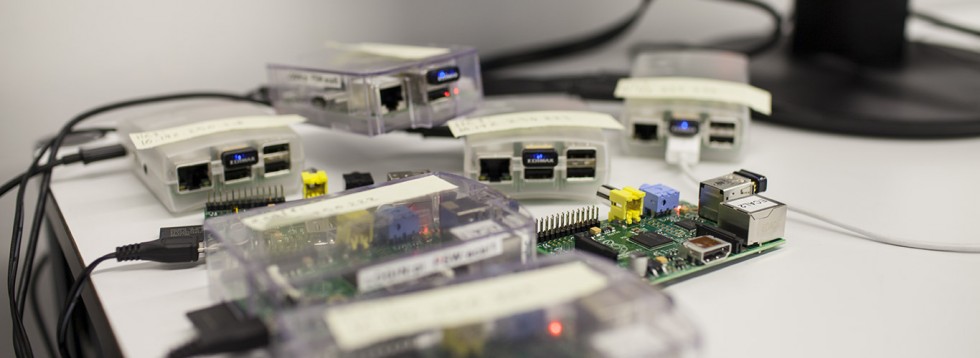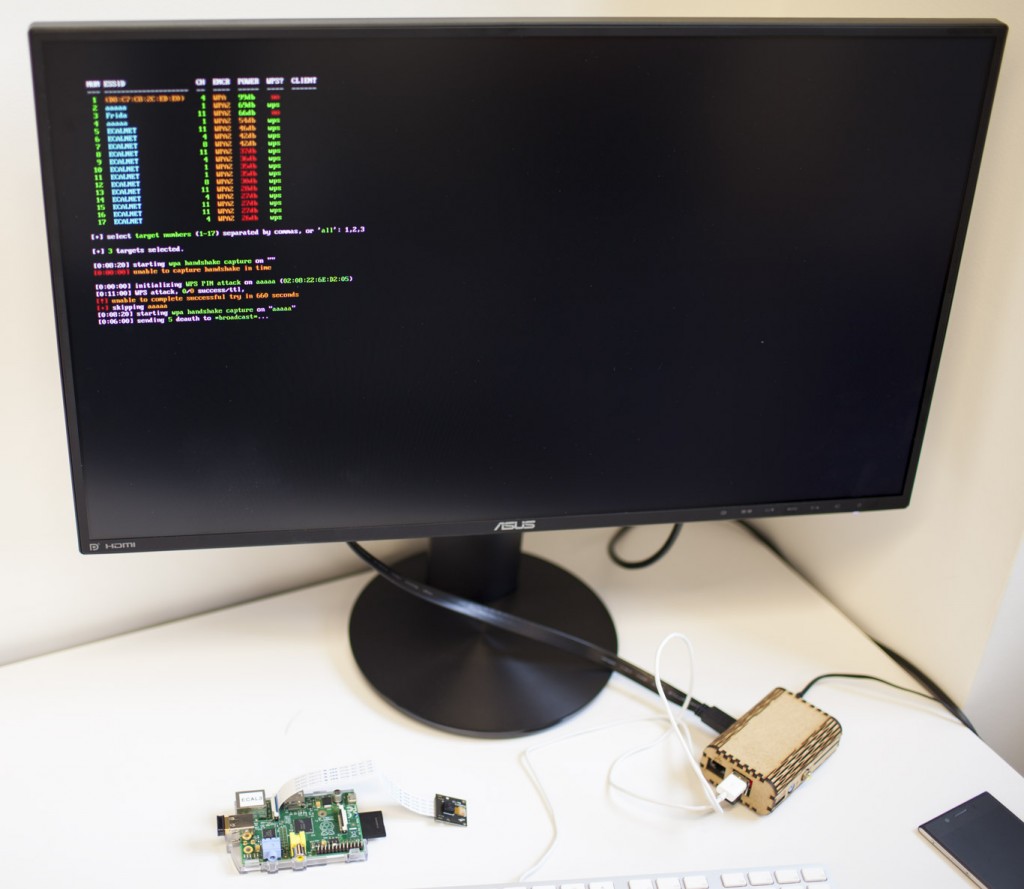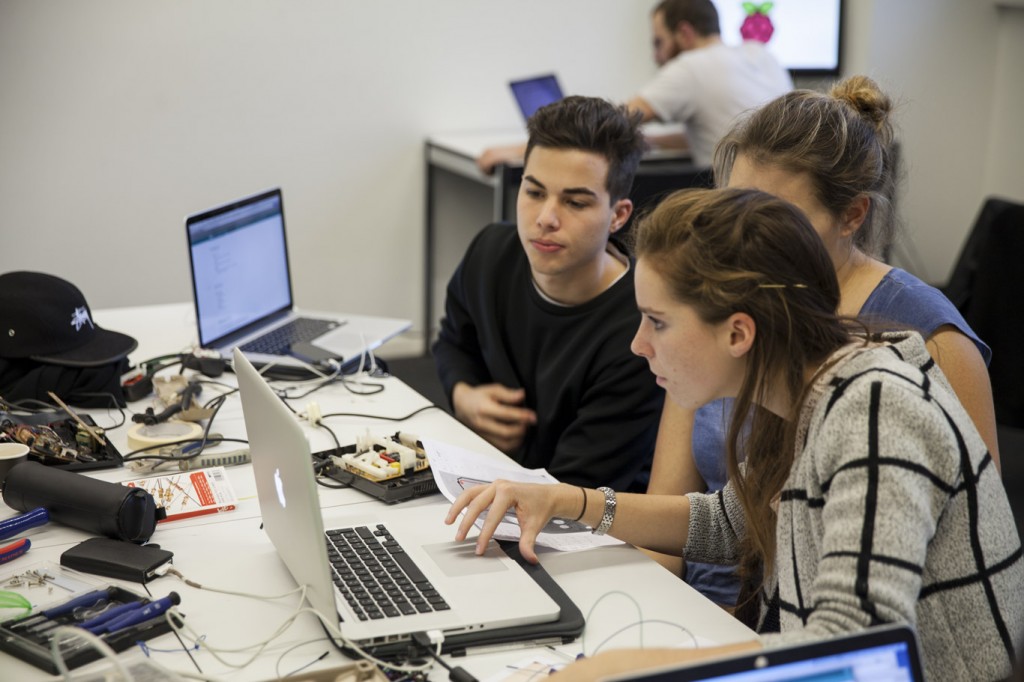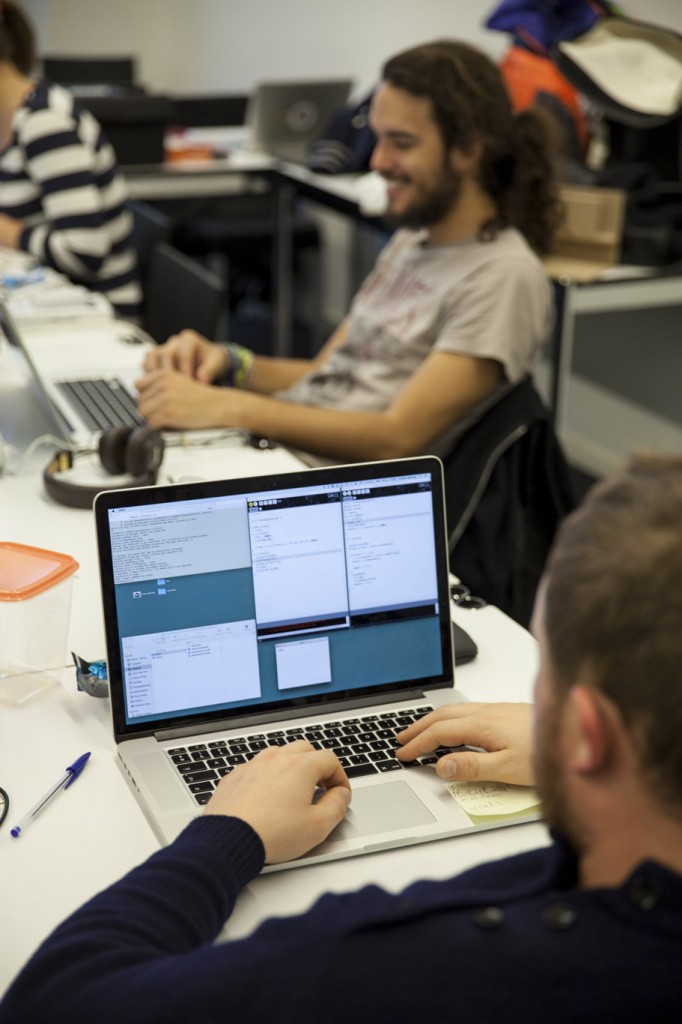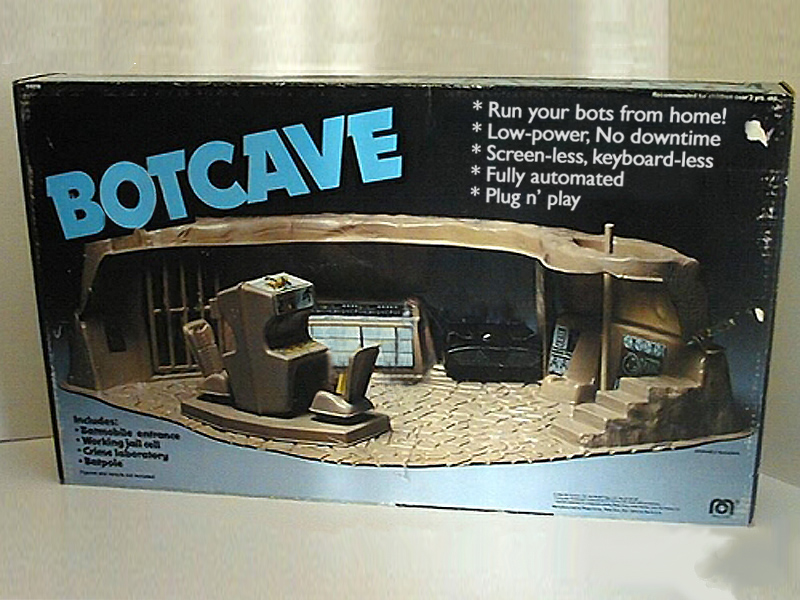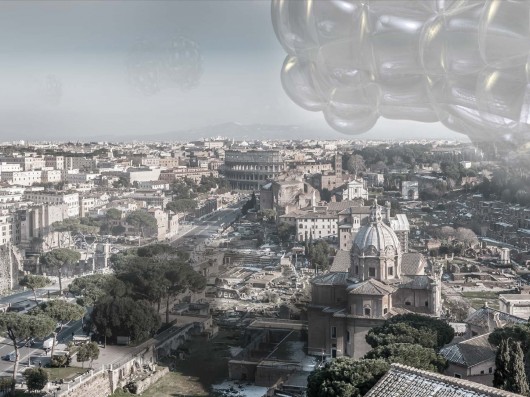Friday, January 23. 2015
Inhabiting and Interfacing the Cloud(s) – Talk & workshop at LIFT 15
Note: Following my recent posts about the research project "Inhabiting & Intercacing the Cloud(s)" I'm leading for ECAL, Nicolas Nova and I will be present during next Lift Conference in Geneva (Feb. 4-6 2015) for a talk combined with a workshop and a skype session with EPFL (a workshop related to the I&IC research project will be on the finish line at EPFL –Prof. Dieter Dietz’s ALICE Laboratory– on the day we’ll present in Geneva). If you plan to take part to Lift 15, please come say "hello" and exchange about the project.
Via the Lift Conference & iiclouds.org
—–
Inhabiting and Interfacing the Cloud(s)
Workshop description : Since the end of the 20th century, we have been seeing the rapid emergence of “Cloud Computing”, a new constructed entity that combines extensively information technologies, massive storage of individual or collective data, distributed computational power, distributed access interfaces, security and functionalism.
In a joint design research that connects the works of interaction designers from ECAL & HEAD with the spatial and territorial approaches of architects from EPFL, we’re interested in exploring the creation of alternatives to the current expression of “Cloud Computing”, particularly in its forms intended for private individuals and end users (“Personal Cloud”). It is to offer a critical appraisal of this “iconic” infrastructure of our modern age and its user interfaces, because to date their implementation has followed a logic chiefly of technical development, governed by the commercial interests of large corporations, and continues to be seen partly as a purely functional,centralized setup. However, the Personal Cloud holds a potential that is largely untapped in terms of design, novel uses and territorial strategies.
The workshop will be an opportunity to discuss these alternatives and work on potential scenarios for the near future. More specifically, we will address the following topics:
- How to combine the material part with the immaterial, mediatized part? Can we imagine the geographical fragmentation of these setups?
- Might new interfaces with access to ubiquitous data be envisioned that take nomadic lifestyles into account and let us offer alternatives to approaches based on a “universal” design? Might these interfaces also partake of some kind of repossession of the data by the end users?
- What setups and new combinations of functions need devising for a partly nomadic lifestyle? Can the Cloud/Data Center itself be mobile?
- Might symbioses also be developed at the energy and climate levels (e.g. using the need to cool the machines, which themselves produce heat, in order to develop living strategies there)? If so, with what users (humans, animals, plants)?
The joint design research Inhabiting & Interfacing the Cloud(s) is supported by HES-SO, ECAL & HEAD.
Interactivity : The workshop will start with a general introduction about the project, and moves to a discussion of its implications, opportunities and limits. Then a series of activities will enable break-out groups to sketch potential solutions.
Sunday, December 14. 2014
I&IC workshop #3 at ECAL: output > Networked Data Objects & Devices | #data #things
Via iiclouds.org
-----
The third workshop we ran in the frame of I&IC with our guest researcher Matthew Plummer-Fernandez (Goldsmiths University) and the 2nd & 3rd year students (Ba) in Media & Interaction Design (ECAL) ended last Friday (| rblg note: on the 21st of Nov.) with interesting results. The workshop focused on small situated computing technologies that could collect, aggregate and/or “manipulate” data in automated ways (bots) and which would certainly need to heavily rely on cloud technologies due to their low storage and computing capacities. So to say “networked data objects” that will soon become very common, thanks to cheap new small computing devices (i.e. Raspberry Pis for diy applications) or sensors (i.e. Arduino, etc.) The title of the workshop was “Botcave”, which objective was explained by Matthew in a previous post.
The choice of this context of work was defined accordingly to our overall research objective, even though we knew that it wouldn’t address directly the “cloud computing” apparatus — something we learned to be a difficult approachduring the second workshop –, but that it would nonetheless question its interfaces and the way we experience the whole service. Especially the evolution of this apparatus through new types of everyday interactions and data generation.
Matthew Plummer-Fernandez (#Algopop) during the final presentation at the end of the research workshop.
Through this workshop, Matthew and the students definitely raised the following points and questions:
1° Small situated technologies that will soon spread everywhere will become heavy users of cloud based computing and data storage, as they have low storage and computing capacities. While they might just use and manipulate existing data (like some of the workshop projects — i.e. #Good vs. #Evil or Moody Printer) they will altogether and mainly also contribute to produce extra large additional quantities of them (i.e. Robinson Miner). Yet, the amount of meaningful data to be “pushed” and “treated” in the cloud remains a big question mark, as there will be (too) huge amounts of such data –Lucien will probably post something later about this subject: “fog computing“–, this might end up with the need for interdisciplinary teams to rethink cloud architectures.
2° Stored data are becoming “alive” or significant only when “manipulated”. It can be done by “analog users” of course, but in general it is now rather operated by rules and algorithms of different sorts (in the frame of this workshop: automated bots). Are these rules “situated” as well and possibly context aware (context intelligent) –i.e.Robinson Miner? Or are they somehow more abstract and located anywhere in the cloud? Both?
3° These “Networked Data Objects” (and soon “Network Data Everything”) will contribute to “babelize” users interactions and interfaces in all directions, paving the way for new types of combinations and experiences (creolization processes) — i.e. The Beast, The Like Hotline, Simon Coins, The Wifi Cracker could be considered as starting phases of such processes–. Cloud interfaces and computing will then become everyday “things” and when at “house”, new domestic objects with which we’ll have totally different interactions (this last point must still be discussed though as domesticity might not exist anymore according to Space Caviar).
Moody Printer – (Alexia Léchot, Benjamin Botros)
Moody Printer remains a basic conceptual proposal at this stage, where a hacked printer, connected to a Raspberry Pi that stays hidden (it would be located inside the printer), has access to weather information. Similarly to human beings, its “mood” can be affected by such inputs following some basic rules (good – bad, hot – cold, sunny – cloudy -rainy, etc.) The automated process then search for Google images according to its defined “mood” (direct link between “mood”, weather conditions and exhaustive list of words) and then autonomously start to print them.
A different kind of printer combined with weather monitoring.
The Beast – (Nicolas Nahornyj)
Top: Nicolas Nahornyj is presenting his project to the assembly. Bottom: the laptop and “the beast”.
The Beast is a device that asks to be fed with money at random times… It is your new laptop companion. To calm it down for a while, you must insert a coin in the slot provided for that purpose. If you don’t comply, not only will it continue to ask for money in a more frequent basis, but it will also randomly pick up an image that lie around on your hard drive, post it on a popular social network (i.e. Facebook, Pinterest, etc.) and then erase this image on your local disk. Slowly, The Beast will remove all images from your hard drive and post them online…
A different kind of slot machine combined with private files stealing.
Robinson – (Anne-Sophie Bazard, Jonas Lacôte, Pierre-Xavier Puissant)
Top: Pierre-Xavier Puissant is looking at the autonomous “minecrafting” of his bot. Bottom: the proposed bot container that take on the idea of cubic construction. It could be placed in your garden, in one of your room, then in your fridge, etc.
Robinson automates the procedural construction of MineCraft environments. To do so, the bot uses local weather information that is monitored by a weather sensor located inside the cubic box, attached to a Raspberry Pi located within the box as well. This sensor is looking for changes in temperature, humidity, etc. that then serve to change the building blocks and rules of constructions inside MineCraft (put your cube inside your fridge and it will start to build icy blocks, put it in a wet environment and it will construct with grass, etc.)
A different kind of thermometer combined with a construction game.
Note: Matthew Plummer-Fernandez also produced two (auto)MineCraft bots during the week of workshop. The first one is building environment according to fluctuations in the course of different market indexes while the second one is trying to build “shapes” to escape this first envirnment. These two bots are downloadable from theGithub repository that was realized during the workshop.
#Good vs. #Evil – (Maxime Castelli)
Top: a transformed car racing game. Bottom: a race is going on between two Twitter hashtags, materialized by two cars.
#Good vs. #Evil is a quite straightforward project. It is also a hack of an existing two racing cars game. Yet in this case, the bot is counting iterations of two hashtags on Twitter: #Good and #Evil. At each new iteration of one or the other word, the device gives an electric input to its associated car. The result is a slow and perpetual race car between “good” and “evil” through their online hashtags iterations.
A different kind of data visualization combined with racing cars.
The “Like” Hotline – (Mylène Dreyer, Caroline Buttet, Guillaume Cerdeira)
Top: Caroline Buttet and Mylène Dreyer are explaining their project. The screen of the laptop, which is a Facebook account is beamed on the left outer part of the image. Bottom: Caroline Buttet is using a hacked phone to “like” pages.
The “Like” Hotline is proposing to hack a regular phone and install a hotline bot on it. Connected to its online Facebook account that follows a few personalities and the posts they are making, the bot ask questions to the interlocutor which can then be answered by using the keypad on the phone. After navigating through a few choices, the bot hotline help you like a post on the social network.
A different kind of hotline combined with a social network.
Simoncoin – (Romain Cazier)
Top: Romain Cazier introducing its “coin” project. Bottom: the device combines an old “Simon” memory game with the production of digital coins.
Simoncoin was unfortunately not finished at the end of the week of workshop but was thought out in force details that would be too long to explain in this short presentation. Yet the main idea was to use the game logic of Simon to generate coins. In a parallel to the Bitcoins that are harder and harder to mill, Simon Coins are also more and more difficult to generate due to the game logic.
Another different kind of money combined with a memory game.
The Wifi Cracker – (Bastien Girshig, Martin Hertig)
Top: Bastien Girshig and Martin Hertig (left of Matthew Plummer-Fernandez) presenting. Middle and Bottom: the wifi password cracker slowly diplays the letters of the wifi password.
The Wifi Cracker is an object that you can independently leave in a space. It furtively looks a little bit like a clock, but it won’t display the time. Instead, it will look for available wifi networks in the area and start try to find their protected password (Bastien and Martin found a ready made process for that). The bot will test all possible combinations and it will take time. Once the device will have found the working password, it will use its round display to transmit the password. Letter by letter and slowly as well.
A different kind of cookoo clock combined with a password cracker.
Acknowledgments:
Lots of thanks to Matthew Plummer-Fernandez for its involvement and great workshop direction; Lucien Langton for its involvment, technical digging into Raspberry Pis, pictures and documentation; Nicolas Nova and Charles Chalas (from HEAD) so as Christophe Guignard, Christian Babski and Alain Bellet for taking part or helping during the final presentation. A special thanks to the students from ECAL involved in the project and the energy they’ve put into it: Anne-Sophie Bazard, Benjamin Botros, Maxime Castelli, Romain Cazier, Guillaume Cerdeira, Mylène Dreyer, Bastien Girshig, Jonas Lacôte, Alexia Léchot, Nicolas Nahornyj, Pierre-Xavier Puissant.
From left to right: Bastien Girshig, Martin Hertig (The Wifi Cracker project), Nicolas Nova, Matthew Plummer-Fernandez (#Algopop), a “mystery girl”, Christian Babski (in the background), Patrick Keller, Sebastian Vargas, Pierre Xavier-Puissant (Robinson Miner), Alain Bellet and Lucien Langton (taking the pictures…) during the final presentation on Friday.
Friday, November 21. 2014
Botcaves on #Github | #iiclouds #bots #code
Via iiclouds.org
-----
Note: a message from Matthew on Tuesday about his ongoing I&IC workshop. More resources to come there by the end of the week, as students are looking into many different directions!
I’ve started a github repository for the workshop so I can post code and tips there.
Please share with the students:https://github.com/plummerfernandez/botcaves/
I&IC workshop at ECAL: The birth of Botcaves | #iiclouds #designresearch #bots
Note: the workshop continues and should finish today. We'll document and publish results next week. As the workshop is all about small size and situated computing, Lucien Langton (assistant on the project) made a short tutorial about the way to set up your Pi. I'll also publish the Github repository that Matthew Plummer-Fernandez has set up.
Via iiclouds.org
-----
The Bots are running! The second workshop of I&IC’s research study started yesterday with Matthew’s presentation to the students. A video of the presentation might be included in the post later on, but for now here’s the [pdf]: Botcaves
First prototypes setup by the students include bots playing Minecraft, bots cracking wifi’s, bots triggered by onboard IR Cameras. So far, some groups worked directly with Python scripts deployed via SSH into the Pi’s, others established a client-server connection between their Mac and their Pi by installing Processing on their Raspberry and finally some decided to start by hacking hardware to connect to their bots later.
The research process will be continuously documented during the week.
The Wifi cracking Bot
Hacking a phone
Connecting to Pi via Proce55ing
Wednesday, November 19. 2014
I&IC workshop #3 at ECAL, brief: “Botcaves” | #bots #data #housing #designresearch #iiclouds.org
| rblg note: following my previous post about the design research project we are leading with Nicolas Nova, a workshop is going on this week at the ECAL with our guest contributor Matthew Plummer-Frenandez (aka #Algopop). I'll reblog here during the coming days what's happening on our parallel blog (iiclouds.org)
Via iiclouds.org
-----
Note: I publish here the brief that Matthew Plummer-Fernandez (a.k.a. Algopop) sent me before the workshop he’ll lead next week (17-21.11) with Media & Interaction Design students from 2nd and 3rd year Ba at the ECAL.
This workshop will take place in the frame of the I&IC research project, for which we had the occasion to exchange together prior to the workshop. It will investigate the idea of very low power computing, situated processing, data sensing/storage and automatized data treatment (“bots”) that could be highly distributed into everyday life objects or situations. While doing so, the project will undoubtedly address the idea of “networked objects”, which due to the low capacities of their computing parts will become major consumers of cloud based services (computing power, storage). Yet, following the hypothesis of the research, what kind of non-standard networked objects/situations based on what king of decentralized, personal cloud architecture?
The subject of this workshop explains some recent posts that could serve as resources or tools for this workshop, as the students will work around personal “bots” that will gather, process, host and expose data.
Stay tuned for more!
Botcaves (by Matthew Plummer-Fernandez)
Algorithmic and autonomous software agents known as bots are increasingly participating in everyday life. Bots can potentially gather data from both physical and digital activity, store and share data in the ‘cloud’, and develop ways to communicate and learn from their databases. In essence bots can animate data, making it useful, interactive, visual or legible. Bots although software-based require hardware from which to run from, and it is this underexplored crossover between the physical and digital presence of bots that this workshop investigates.
You will be asked to design a physical ‘housing’ or ‘interface’, either bespoke or hacked from existing objects, for your personal bots to run from. These botcaves would be present in the home, workspace or other, permitting novel interactions between the digital and physical environments that these bots inhabit.
Raspberry Pis, template bot code, APIs, cloud storage, existing services (Twitter, IFTTT, etc) and physical elements (sensors, lights, cameras, etc) may be used in the workshop.
Bio
British/ Colombian Artist and Designer Matthew Plummer-Fernandez makes work that critically and playfully examines sociocultural entanglements with technologies. His current interests span algorithms, bots, automation, copyright, 3D files and file-sharing. He was awarded a Prix Ars Electronica Award of Distinction for the project Disarming Corruptor; an app for disguising 3D Print files as glitched artefacts. He is also known for his computational approach to aesthetics translated into physical sculpture.
For research purposes he runs Algopop, a popular tumblr that documents the emergence of algorithms in everyday life as well as the artists that respond to this context in their work. This has become the starting point to a practice-based PhD funded by the AHRC at Goldsmiths, University of London, where he is also a research associate at the Interaction Research Studio and a visiting tutor. He holds a BEng in Computer Aided Mechanical Engineering from Kings College London and an MA in Design Products from the Royal College of Art.
http://www.plummerfernandez.com
http://algopop.tumblr.com
Wednesday, June 25. 2014
Experiments in Second Life Reveal Alternative Laws of Physics | #artificial
Note: remember Second Life? Well, here it comes again (as Linden Lab just announced an "Oculus Rift-able" version for 2016), interestingly in this case (below), twisted by Renato dos Santos for educational purposes.
...
Somehow, this way of playing around laws of physics makes me think a little bit to what we learned back in the late 90ies when fabric | ch played a lot with shared digital worlds (projects like La_Fabrique, or MIX-m. Home made technologies like Rhizoreality): the fact that indeed, the laws of physics could be scripted or at least customized, like in games. Or the fact that two "persons" (their avatars) could share the same space, "talk" to each other through mediated means, but not see and inhabit the same environment, the fact that things could therefore have several states at the same time (quantum reality?), etc.
We certainly learned within digital worlds what drived conceptual appoaches for later projects "in real life", like RealRoom(s), Tower of Atmospheric Realtion(s), Perpetual Tropical Sunshine, etc. Even very recently, a work like Deterritorialized Living is related to that -- DL is about the creation of an artificial troposphere, driven by different rules than a natural one, yet inhabitable too.
-----
The ability to modify the laws of physics in the virtual world of Second Life is allowing researchers to experiment with entirely different laws of motion.

Second Life is an online world in which people use avatars to explore and interact with each other and to build more or less anything based on simple geometric shapes. These objects are governed by a set of roughly Earth-like laws of physics that simulate conservation of momentum, gravity, and elasticity in collisions and so on.
But Second Life also has a scripting language that allows residents to introduce additional effects. It allows them to buy and sell objects using virtual money, to create textures for clothing as well as animations.
And it allows the behavior of objects to be modified in various ways. In other words, in Second Life, the laws of physics are up for grabs.
And that raises an interesting prospect. This scripting language allows people to simulate universes in which matter is governed in an entirely different way.
Today, Renato dos Santos at the Lutheran University of Brazil in Canoas reveals his efforts to tamper with the laws of physics in Second Life and how his microworlds allow students to study and experience laws of motion that are entirely different from the ones that work in our universe.
To begin with, Dos Santos characterizes the properties of matter and the laws of physics that are already at work in Second Life. He points out that the world has some relatively complex laws to govern the weather and the rising and setting of the Sun.
“The Second Life ‘Sun’ usually rises and sets each four Earth hours always directly opposite a full Moon,” he says. And the servers compute a simplified solution of the Navier-Stokes equations to simulate the motion of winds and clouds that time-evolve across the entire world.
On the other hand, there are no fluids in Second Life. “Water is a mere texture applicable to an object,” he says. Consequently, there is no water resistance or air resistance and no concept of buoyancy. What’s more, light simply exists in Second Life without any physical mechanism involved in its production or propagation.
All these factors and others have to be taken into account when designing a microworld in Second Life. Nevertheless, Dos Santos has been able to create a number of interesting simulations.
A good example is his simulation of a cannon firing cannonballs to study their trajectory. One of the first challenges is to use the Second Life scripting language to introduce a set of initial conditions for the cannonballs—their initial velocity and position, for example.
Having done this, it is possible to calculate their position and velocity at any point during their flight. It is also simple matter to calculate their kinetic energy and momentum.
Once fired, these cannonballs do not travel in a straight line, however. Instead, gravity pulls them towards the ground and wind can push them off course. Dos Santos says it is possible to build rules into the scripting language that counteract these forces. That’s what makes possible an entirely different set of laws of motion.
To demonstrate this, Dos Santos has created two different sets of laws that can be put into operation with the push of a button. The first is Newton’s traditional laws of motion, which lead to the familiar parabolic trajectories.
The second set of laws are based on the theory of impetus that was popularized by Jean Buridan, a French priest and medieval scientist active during the 14th century. This theory was an important intellectual precursor to the more modern concepts of momentum and acceleration.
Buridan’s ideas were an extension of Aristotle’s theory that “continuation of motion depends on continued action of the force.” Buridan extended this by introducing a property called impetus which he formally defined as weight multiplied by velocity.
One of Buridan’s students described impetus in this way: “When something moves a stone by violence, in addition to imposing on it an actual force, it impresses in it a certain impetus. In the same way gravity not only gives motion itself to a moving body, but also gives it a motive power and an impetus …”
Buridan’s mathematical formula for impetus allows it to be incorporated into a Second Life simulation, which is exactly what Dos Santos has done. This allows students to experiment with different laws and see their effects.
Interestingly, Buridan’s laws result in a cannonball trajectory that is a little like that of a golf ball which travels on an upwards inclination and then suddenly drops due to air resistance.
You can watch videos of these experiments here.
That’s an interesting approach that has useful potential applications in education. But there is surely much more that can be done in virtual worlds like Second Life.
One interesting question is how to devise experiments within the virtual world that tests the particular laws of physics in action and the situations in which they break down.
For example, the concept of time might be investigated using experiments involving simultaneity. It might even reveal loopholes that can be exploited for a bit of fun.
An approach like that would require significantly more ingenuity and would simulate more accurately the work of physicists in the real world who do not know the laws in advance and have only their observations to guide them.
This kind of approach has been tested in virtual worlds such as Minecraft but there is clearly scope for the same approach to be applied elsewhere.
The laws of virtual physics are there for the taking, should anyone have the ingenuity and the spare time to pursue them.
Ref: arxiv.org/abs/1405.6703 : Second Life As A Platform For Physics Simulations And Microworlds: An Evaluation
Wednesday, June 18. 2014
Four Ways to Learn About Architecture for Free | #learning
Via ArchDaily
-----
Learning doesn’t necessarily need to be formal – or expensive for that matter. Thanks to the Internet and some generous benefactors, you can further your education for free from the comfort of your own home. Top schools such as MIT and Harvard University are affiliated with free online learning resources, allowing people from all over the globe to connect and audit courses at their own pace. In some cases, these services even provide self-educators with proof for having completed courses. Keep reading after the break to check out our round-up of four free online learning resources.
MIT OpenCourseWare: Architecture
In 2003, MIT officially launched OpenCourseWare – an online platform through which absolutely anyone can access the same course content as paying students – for free. The architecture section boasts over 100 undergraduate and graduate level courses, complete with downloadable lecture notes, assignments, reading lists, and in many cases, examples of past student work. Even though you won’t receive feedback from professors or certification for completing coursework, having free access to the oldest architecture department in the United States’ teachings is nevertheless an amazing resource. Below are two of the MIT OpenCourseWare architecture courses, described.
Architectural Construction and Computation is for architecture students interested in how computers can be facilitate design and construction. The course begins with a pre-prepared computer model, which is used for testing and investigating the construction process. The construction process is explored in terms of detail design and structural design, taking legal and computational issues into consideration.
Theory of City Form is one of the handful of architecture courses offered in audio and video format through MIT OpenCourseWare. The title is pretty self-explanatory – the course presents students with historical and modern theories of city form along with appropriate case studies, helping them build an understanding of urbanism and architecture for future educational and professional pursuits.
Delft University of Technology OpenCourseWare
Just like MIT, TU Delft also has an OpenCourseWare platform – albeit less extensive. Even though the website does not have a designated architecture section, designers can still make use out of the prestigious school’s science and technical offerings. Available material for the majority of courses includes audio and video lecture recordings, readings, assignments, and practice exams.
Bio Inspired Design ”gives an overview of non-conventional mechanical approaches in nature and shows how this knowledge can lead to more creativity in mechanical design and to better (simpler, smaller, more robust) solutions than with conventional technology. It discusses a large number of biological organisms with smart constructions, unusual mechanisms or clever sensing and processing methods and presents a number of technical examples and designs of bio-inspired instruments and machines.”
Wastewater Treatment looks at the development of wastewater treatment technologies and their application. “High-tech and low-tech systems, which are applicable in both industrialized and developing countries, are discussed.” Specific examination topics include technologies for nutrient removal and recovery, such as anaerobic treatment systems and membrane filtration techniques.
EdX, a non-profit online initiative founded by MIT and Harvard University, offers free interactive classes from some of the world’s top universities. If you decide to take a course, you can try for a certificate of achievement – or you can simply audit it, choosing what and how much you want to do. It’s up to you. A huge benefit is being able to connect with like-minded classmates all over the world using the website’s peer-to-peer social learning tools. In addition to categories like computer science, music, and economics, they have a dedicated architecture section. Two of their architecture courses, described below, are currently open to fall registration.
The Search for Vernacular Architecture of Asia ”is a comprehensive, dialogue-based course providing an in-depth exploration of the vernacular concept and its applications to the culture and built environments of the past, present, and future. Designed to promote discussion and dialogue while contributing to the discourse surrounding the concept of the vernacular, this five-week course will challenge the perception of tradition and stimulate a deeper analysis of one’s local environment.” As suggested in the title, the course will focus specifically on the vernacular in Asia.
“While the development of cities in different parts of the world is moving in diverse directions, all estimations show that cities worldwide will change and grow strongly in the coming years” – especially in the tropics, where “it is expected that the number of new urban residents will increase by 3 times the population of Europe today.” With a specific focus on Asia, Future Cities will explore design and management methods over the course of nine weeks to increase the sustainable performance of cities and therefore, their resiliency.
Iversity is a similar platform to Edx, offering a wide range of interactive courses in collaboration with independent instructors, universities, and knowledge-based companies. Dr. Ivan Shumkov, one of the website’s educators, is a New York based architect, curator, and professor. He has taught at Harvard GSD, the Pratt Institute‘s School of Architecture, and Parsons The New School for Design – just to name a few. So far, he has offered two free architecture courses via Iversity, described below. Be sure to keep an eye out for his offerings in the future and take a look to see if any of the other courses appeal to you.
Contemporary Architecture analyzed “major contemporary architectural ideas, ideologies, and projects in the context of both globalization and specific local contexts” over a 12-week period. Students studied material from the 1990s onwards, submitting weekly assignments and sitting in on virtual classes and tours. Shumkov hopes to offer the course again after nearly 20,000 people from across the globe participated in its first iteration.
Designing Resilient Schools was taught by both Shumkov and Illac Diaz, the man behind the Liter of Light project in the Phillippines, which won the Curry Stone Design Prize in 2012. The 7-week course asked students to collaborate on resilient school design proposals for the victims of Typhoon Haiyan, which hit the Phillippines on November 9th, 2013. At the end of the course, which was essentially an online version of design studio, an international jury – including Kenneth Frampton and Giancarlo Mazzanti – selected the best design proposals for future implementation.
Friday, April 25. 2014
ECAL students create bizarre smart home objects in Milan | #smart?
Before you'll start reading, let me add a missing information: the projects were developed during a full semester by 2nd year bachelor students at the ECAL, under the direction of Profs. Chris Kabel (product design) and Alain Bellet (interaction design).
Via It's Nice That
-----
By Rob Alderson

Léa Pereyre, Claire Pondard, Tom Zambaz: Mr Time (Image By ECAL/Axel Crettenand & Sylvain Aebischer)
It’s laudable that designers are working on worthy projects that will have a practical impact on building a better future, but we’re big believers that creatives should be engaged in making tomorrow a bit more fun too. Luckily for us, there are institutions like the Ecole cantonale d’art de Lausanne (ECAL).
At this year’s Milan Salone, ECAL’s Industrial Design and Media & Interaction Design students unveiled a series of weird and wonderful objects that presented “a playful interpretation take on the concept of the smart home.” These included a clock that mimics the gestures of those looking at it, cacti that respond musically to being caressed, a pair of chairs one of which reacts to the movements of the sitter in the other, a tea spoon that won’t be separated from its mug and a fan that is powered by the amplified breath of the homeowner.
It’s fair to say that some of these creations are completely impractical, but they all raise questions about our future interaction with household objects and they do so in the quirkiest way possible.







Related Links:
Monday, June 17. 2013
Alive 2013
An interesting conference that will take place at the ETHZ CAAD department next July that I'm fowarding here:
---------------
Via DARCH - ETHZ
By Manuel Kretzer
Dear friends, colleagues and students,
I'm happy to invite you to join us for the - international symposium on adaptive architecture

The full day event will be take place on July 8th, 2013 / 9:00 - 18:00 at the Chair for Computer Aided Architectural Design ETH Zürich-Hönggerberg, HPZ Floor F.
Speakers include: Prof. Ludger Hovestadt (ETH Zürich, CH) | Prof. Philip Beesley (University of Waterloo, CA) | Prof. Kas Oosterhuis (TU Delft, NL) Martina Decker (DeckerYeadon, US) | Claudia Pasquero (ecoLogicStudio, UK) | Manuel Kretzer (ETH Zürich, CH) Tomasz Jaskiewicz (TU Delft, NL) | Jason Bruges (Jason Bruges Studio, UK) | Areti Markopoulou (IAAC, ES) | Ruairi Glynn (UCL, UK) Simon Schleicher (Universität Stuttgart, DE) | John Sarik (Columbia University, US) | Stefan Dulman (Hive Systems, NL)
More info on the speakers, the detailed program, location and registration can be found on the event's website and the attached flyer. www.alive2013.wordpress.com
The symposium is free of charge however registration until July 3rd, 2013 is obligatory. Seats are limited. http://alive13.eventbrite.com
The event is organised by Manuel Kretzer and Tomasz Jaskiewicz, hosted by the Chair for CAAD and supported through the Swiss National Science Foundation.
Friday, April 26. 2013
Resonate Festival
Via DomusWeb
-----
By Roberto Arista
With its second edition, the Serbian festival – a meeting point for technology and art – establishes itself as a sounding board for a mature and growing scene.
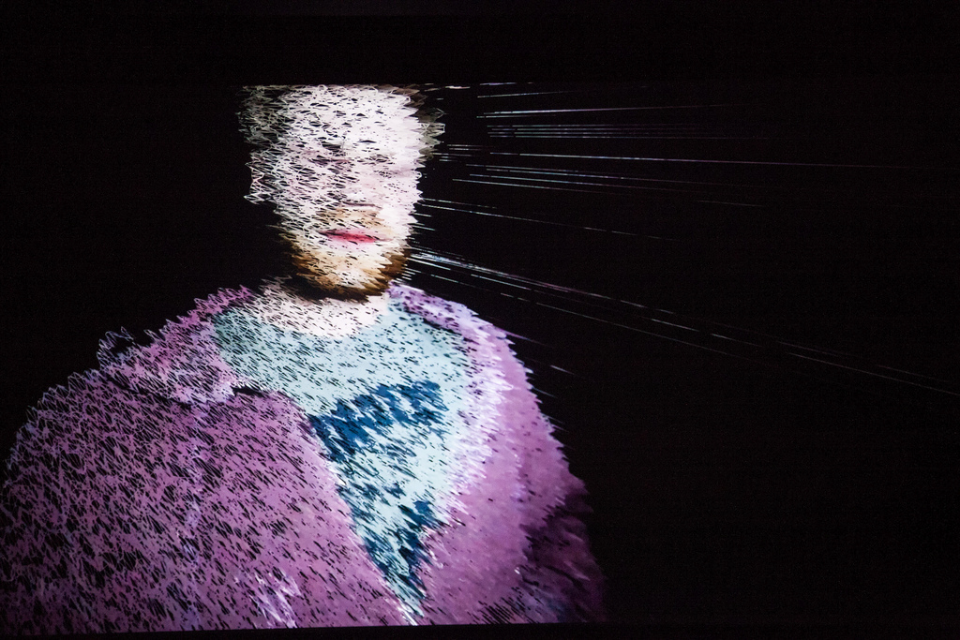
Resonate Festival, Belgrade, 2013. Projection during the debate with Memo Akten, Rainer Kohlberger, Eno Henze and Shane Walter.
Resonate was founded in 2012 by Magnetic Field B and the Creative Applications network, in an attempt to provide the visual arts world with a new platform for discussion. The event focuses on the role of technology in art and culture, and especially on the connections between the disciplines that these areas involve. The 2013 edition took place from March 21 to 23 in the Dom Omladine cultural space, close to the city’s Republic Square. More than 1200 visitors attended the event, which was already sold out several days before the opening.
The first day was devoted to a rich and varied assortment of workshops – open to all selected participants – regarding the analysis of the available tools (hardware and software) for video mapping, data visualization on different media, the design of cross-platform applications, or even the choreography of (flying) drones.
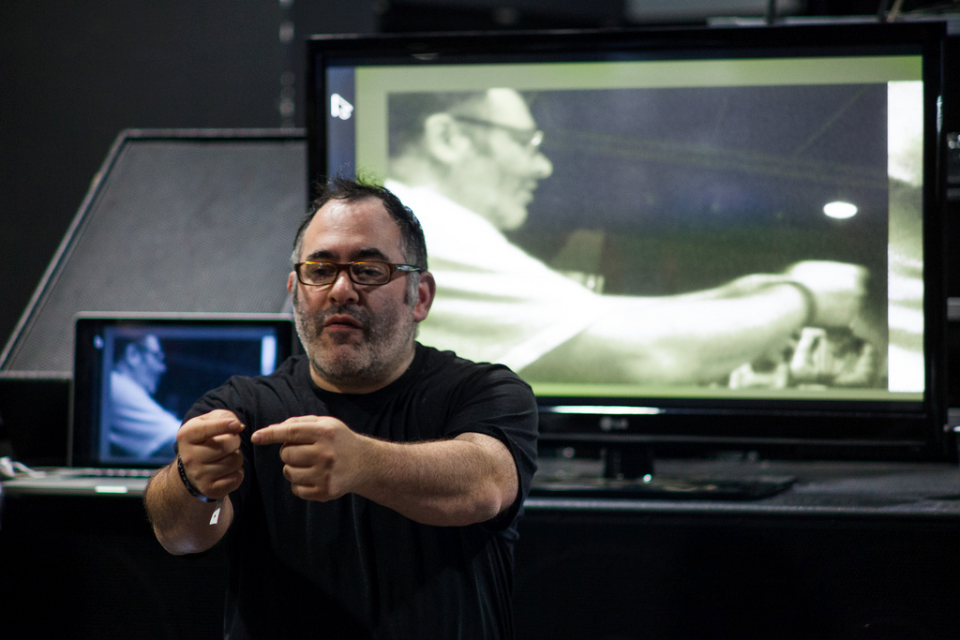
Golan Levin during the “Computer vision in interactive arts” workshop. Photo courtesy of Resonate
The next two days were dedicated to a full program of 44 lectures and video projections. The general impression is that there is a panorama of versatile designers who can carefully hybridise different disciplines and tools – marrying electronic engineering with products, landscape with graphics, analogical techniques with digital media. These designers are bolstered by the freedom to experiment that distinguishes those who are not pigeonholed within a specific category. The profession’s evolution and, more generally, a look at the recent past, were leitmotifs of some of the most interesting projects presented. Examples range from Memo Akten, Golan Levin and Joachim Sauter, who are now ready to offer an engaging retrospective of their projects, to the much admired by the public Meet your creator, Free Universal Construction Kit and Kinetic Sculpture.
The audience in the main room at Dom Omladine during the festival. Photo courtesy of Resonate
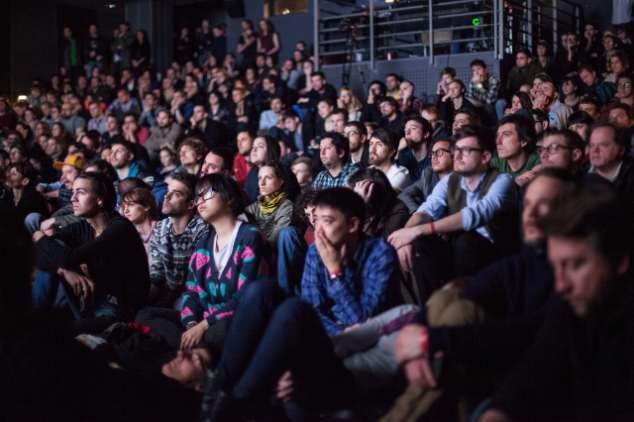
Similarly, a lively debate followed the talk by artist and interaction designer Zach Gage. Is it possible that the "game" – understood within a broader realm than the videogame – has not yet found the right place to be preserved, celebrated and narrated?
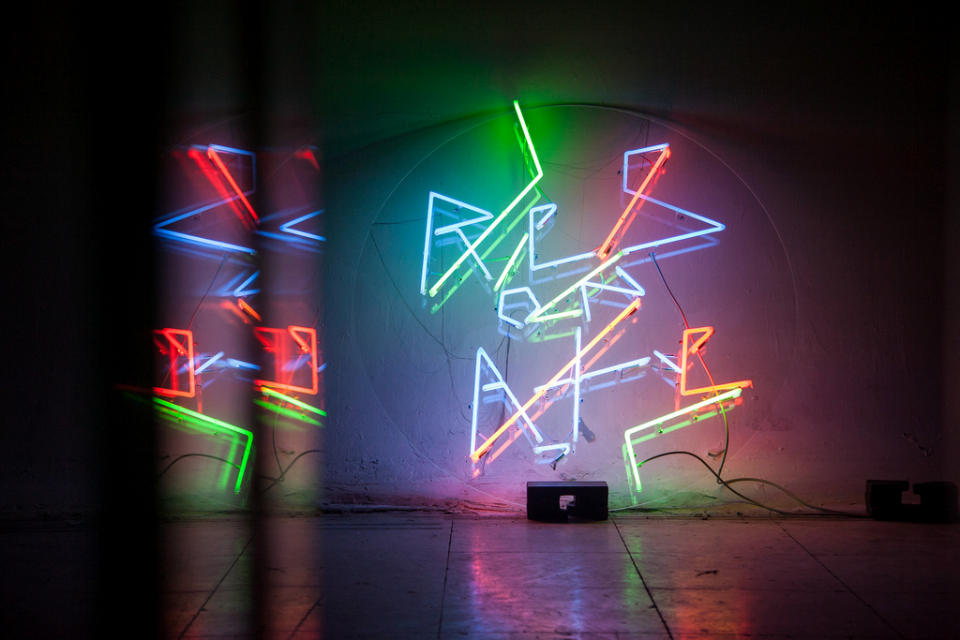
A view of the Building Kluz, where many of the festival's performances took place. Photo courtesy of Resonate
Participants were moved by London-based architect, critic and curator Liam Young’s future scenarios and landscape mutations. Projects like Silent Spring dampened that blind faith in technological advancement that permeated the festival. The work by professors in Europe’s most popular Interaction Design courses was of great interest, in particular Anthony Dunne from the RCA in London, David Gauthier from CIID in Copenhagen and Alain Bellet from ECAL in Lausanne. These schools have overcome the unnecessary separation between the humanistic and scientific universes, while in Italy the legacy left behind by Benedetto Croce still paralyses many university courses.
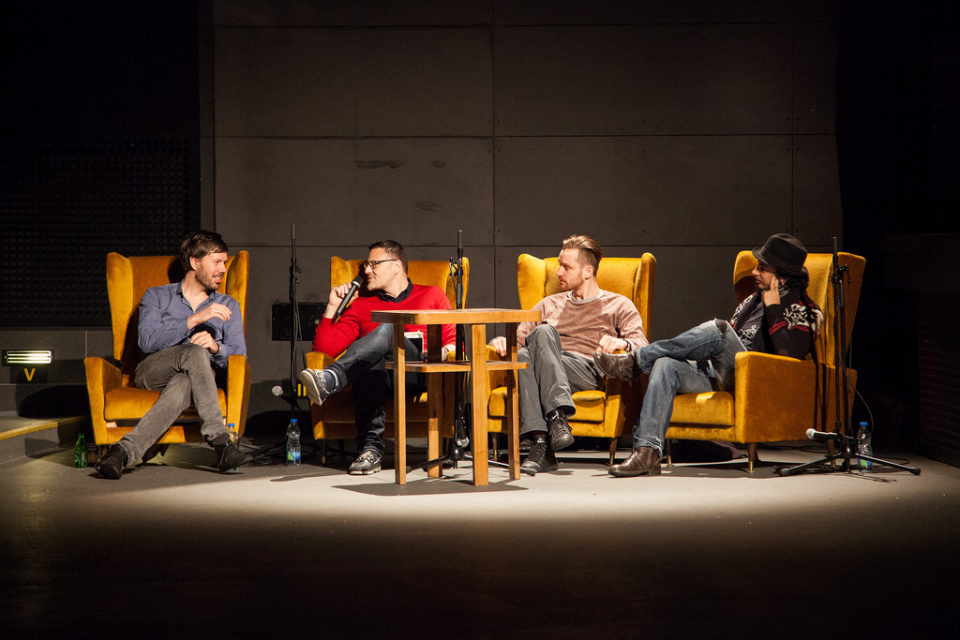
Debate participants during the second day of the festival: Memo Akten, Rainer Kohlberger, Eno Henze and Shane Walter. Photo courtesy of Resonate
It is striking that there were no Italian presenters given the number of European speakers. This is probably due to the Italian design world’s reluctance to accept the digital sphere. However, some undisputed masters were mentioned: Luigi Serafini, whose Codex Seraphinianus has become an international case study, or Bruno Munari’s work in design teaching.
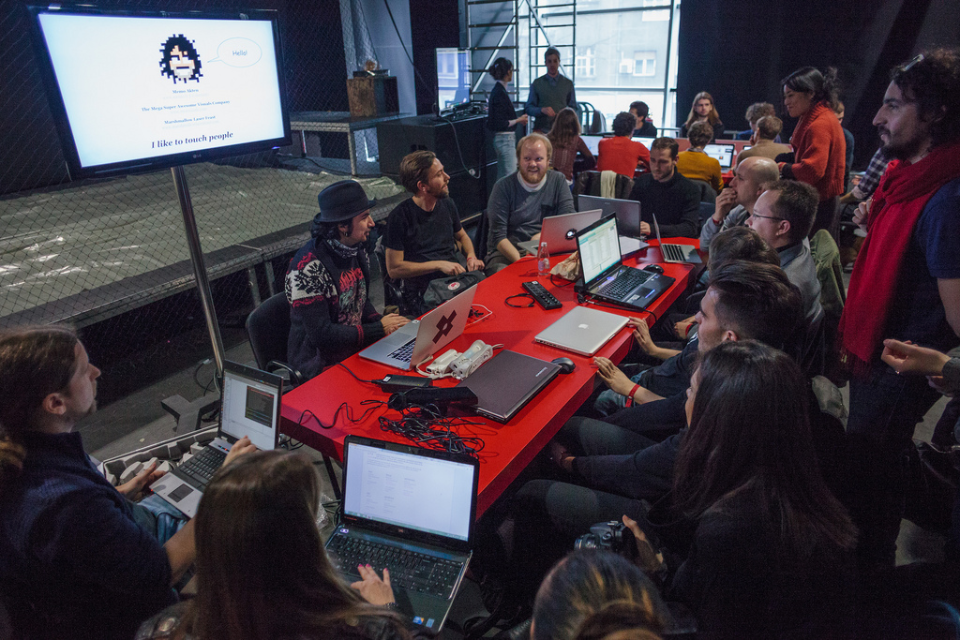
A view of Memo Atken's "How I learnt to stop worrying and love the drones" workshop. Photo courtesy of Resonate.
It became evident that childlike curiosity is fundamental in developing languages and tools. Many festival speakers dared to compare their more mature projects with images from their childhoods, so it is no coincidence that a statement by Carl Sagan’s was heard several times during the festival: "Every kid starts out as a natural-born scientist, and then we beat it out of them. A few trickle through the system with their wonder and enthusiasm for science intact." Roberto Arista
Related Links:
Personal comment:
A little report by Roberto Arista on Domusweb about the last and good Resonate conference that happened in Belgrade last March. With the talk of Alain Bellet that is head of the very good bachelor in Interaction Design at the ECAL, in Lausanne Switzerland (and occasionally, my "boss" too, as I'm teaching there as well)!
fabric | rblg
This blog is the survey website of fabric | ch - studio for architecture, interaction and research.
We curate and reblog articles, researches, writings, exhibitions and projects that we notice and find interesting during our everyday practice and readings.
Most articles concern the intertwined fields of architecture, territory, art, interaction design, thinking and science. From time to time, we also publish documentation about our own work and research, immersed among these related resources and inspirations.
This website is used by fabric | ch as archive, references and resources. It is shared with all those interested in the same topics as we are, in the hope that they will also find valuable references and content in it.
Quicksearch
Categories
Calendar
|
|
April '24 | |||||
| Mon | Tue | Wed | Thu | Fri | Sat | Sun |
| 1 | 2 | 3 | 4 | 5 | 6 | 7 |
| 8 | 9 | 10 | 11 | 12 | 13 | 14 |
| 15 | 16 | 17 | 18 | 19 | 20 | 21 |
| 22 | 23 | 24 | 25 | 26 | 27 | 28 |
| 29 | 30 | |||||


